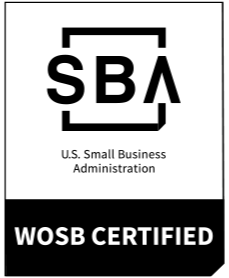Four Facets of Relationship Management for Federal IT Contractors
The United States federal government relies heavily on government contractors. The most recent data shows that, since 1984, contractors comprise the largest segment of the federal workforce—between 30 and 40%. This reliance is due to several pressures:
-
The federal government’s inordinately slow hiring process
-
An aging workforce leading to employee shortages in low-mid levels of government
-
Limited funding for technical training
-
Bureaucratic systems in place that slow down progress
Public interest demands that federal agencies provide the most up to date and efficient solutions for the issues that we face. But technological complexity and longstanding cultural problems make it impossible to keep up with the rapidly evolving digital landscape. To bridge this gap, they are looking outside of their organizations to strategic partners with the technical skills and expertise necessary to achieve their goals.
Rapid pace, competition, and high stakes define these federal relationships. While this type of environment can produce high functioning technical teams, client relationships suffer. This is often due to a lack of communication skills, social awareness, and emotional intelligence that separate consultants from technical resources.
It may be tempting to brush these skills aside for many technical experts and place your sole focus on getting the project done on time and under budget. Misaligned or mismanaged expectations can result in rejection, leading to more time and resources spent on rework, a loss of trust both from your client and within your team, or even a contract loss.
So, how can you avoid these outcomes and develop brilliant and successful client relationships?
Emerald One recognizes four key facets of building client relationship management skills.
First, understand your personal qualities, strengths, and stressors and their potential impact on your relationships.
To build and maintain quality relationships, you must first learn to be self-aware. Look inward and reflect on how well you listen, react to stress, and deal with conflict. Leaders, take a look at your leadership style; how do you motivate your team to keep them on target, and what kind of culture are you personally cultivating?
This exercise may be especially important for managers and executive leadership. One study cited by Harvard Business Review “found that more-experienced managers were less accurate in assessing their leadership effectiveness compared with less experienced managers.” Another found that “higher-level leaders more significantly overvalued their skills (compared with others’ perceptions).”
Practicing self-awareness will help you recognize behaviors that may hinder positive client relationships and those that you can leverage in building them. It will also enable you to know when and how to say no to client requests outside of your skillset or exceed your resource level.
Second, increase your awareness of your client’s individual and organizational strengths, challenges, needs, and wants to build trusted relationships.
Just as self-awareness is vital, being aware of who your client is, both on an individual and organizational level, is critical. Learn to interpret various personality types and adjust your approach to fit their needs. Active listening and asking questions will allow you to recognize your client’s imperatives and priorities. On an organizational level, observe the culture and figure out ways for you and your team to adopt their preferred work style.
Don’t underestimate the power of empathy. If you can show genuine interest and investment in your client’s experiences and challenges, this will elevate the effectiveness of all of your interactions and foster a sense of trust.
Third, develop influential communication methods with stakeholders to ensure your interactions are aligned and lead to defined outcomes.
From the start of your relationship or project, be sure to communicate often and well. Identify who needs to be included and choose appropriate channels. In today’s day and age, we are rarely in want of new means for communication, and one agency may have multiple platforms in place. Try to pick and stick with one platform to minimize the chances of a missed update or request. Some clients prefer weekly or monthly reports, while others require a bit more hand-holding. Determine their preferred cadence from the outset to avoid over or under communicating.
Identify what exactly your client’s goals are in terms of the project you are contracted for and define specific expectations. Give honest estimates of project timeline and cost. Be proactive in communicating your progress toward meeting their expectations, as well as your decision-making process.
Don’t be afraid to set boundaries. Being able to hold difficult conversations is vital to maintaining good client relationships. Your client hired you for your expertise, which sometimes means saying no or respectfully disagreeing with their proposed approach.
Fourth, understand the importance of transition management in maximizing value for your clients.
Recognize the inevitability of change. There are often moments during a project when it becomes evident that you need to pivot to most effectively and efficiently achieve your end goals. Before undergoing this type of transition, it is imperative to understand your team’s and your client’s capacity for change.
When meeting resistance from your client, provide compelling reasoning backed up with detailed reports. Connect with stakeholders and communicate your vision for the outcomes of this transition.
_________________________________________
Good client relationship management is more than getting the project done on time and under budget. It is more than saying yes to every request that comes across your desk. Within federal IT contracting especially, client relationship management takes time, additional resources, and care. Implementing the training and systems necessary to ensure your team’s success in navigating complex client environments is critical. Doing so may save time upfront but will ultimately cost your organization real money, resources, and reputation.
Emerald One has a solution for organizations looking for a more in-depth and tailored analysis of their client relationship management approach. Our Relationship Management (xRM) program guides leadership and team members in understanding themselves and their clients to create, manage, and strengthen trusted relationships by focusing on the client’s desired outcomes and culture.
Email us to learn more about how we can help your teams strengthen their ability to listen, empathize, and communicate with clients while remaining focused on achieving target outcomes.







